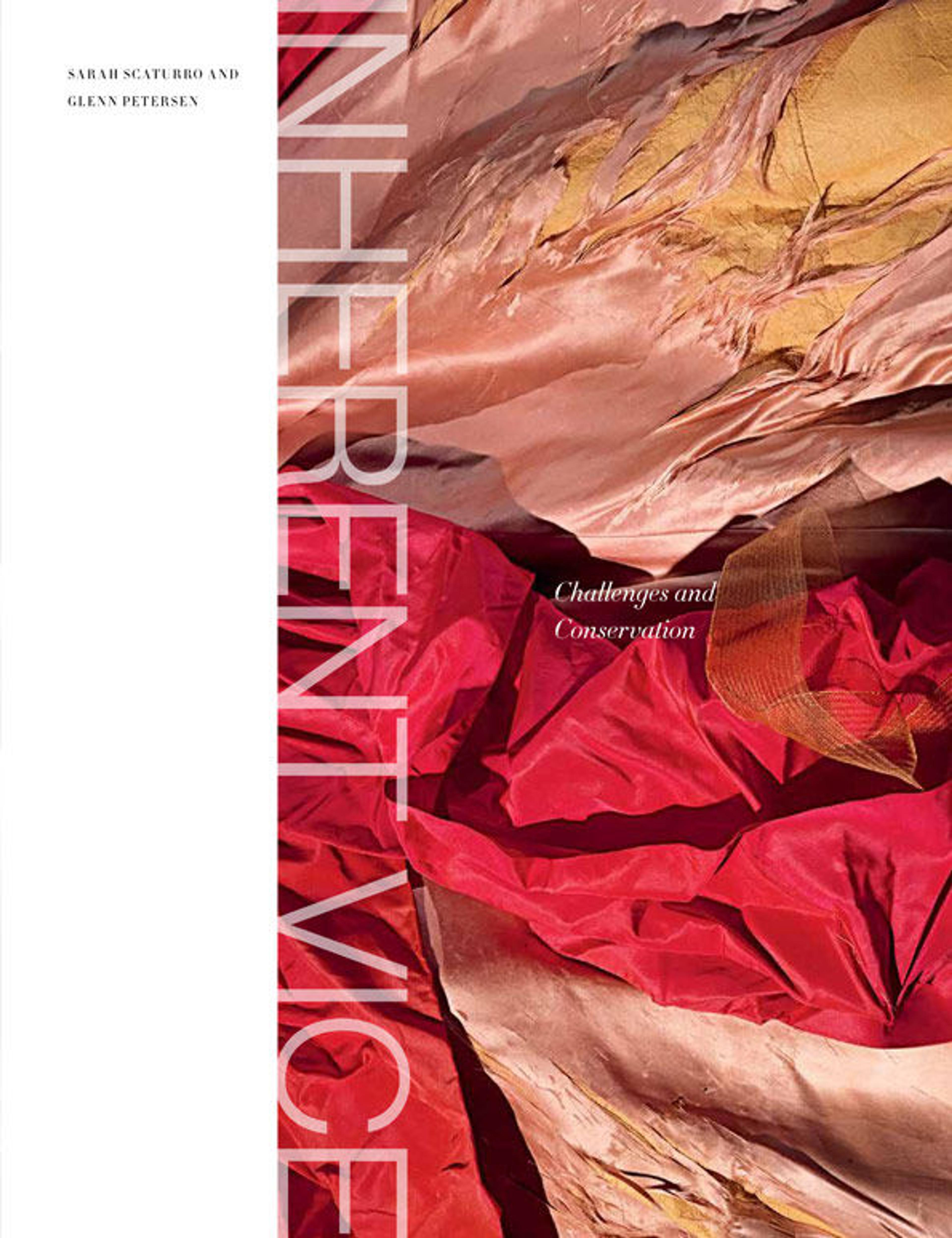
Cover page for "Inherent Vice" by Sarah Scaturro and Glenn Petersen, as shown in the Charles James: Beyond Fashion exhibition catalogue
«Sarah Scaturro and Glenn Petersen are conservators in The Costume Institute who not only contributed to the conservation of Charles James's works in Charles James: Beyond Fashion, on view through August 10, but also authored an essay for the catalogue which accompanies the exhibition. The book offers a comprehensive study of the life and work of legendary Anglo-American couturier Charles James (1906−1978) and highlights his virtuosity and inventiveness. This publication also includes early photographs and rarely seen archival items, such as muslin study pieces, dress forms, and sketches.»
I was fortunate enough to sit down with Sarah and Glenn during the exhibition's installation to discuss their essay in the catalogue, as well as the attention that the show and the catalogue are giving to the conservation of James's works.
Rachel High: Together you authored the chapter at the end of Charles James: Beyond Fashion, "Inherent Vice," which talks about the conservation of the exhibition's objects. Could you explain what "inherent vice" means and why it is especially an issue for the works of Charles James?
Sarah Scaturro: "Inherent vice" is a quality intrinsic to an object that is the very cause of its demise, a form of self-destruction. For James's work in particular, there are a variety of ways in which inherent vice manifests itself—including the materials that are used, how they're used, the way works are assembled, how the objects were used, and the way in which they were stored. A perfect storm of events often causes James's large ball gowns to have a lot of problems. By and large, Glenn, wouldn't you say that James's daywear and less sculptural eveningwear don't really exhibit what we would call "inherent vice"?
Glenn Petersen: Right, it's mostly the gowns that have more pronounced problems.
Sarah Scaturro: And really that's because James used so many different materials laminated together to achieve a sculptural quality, something he couldn't achieve using one single material.
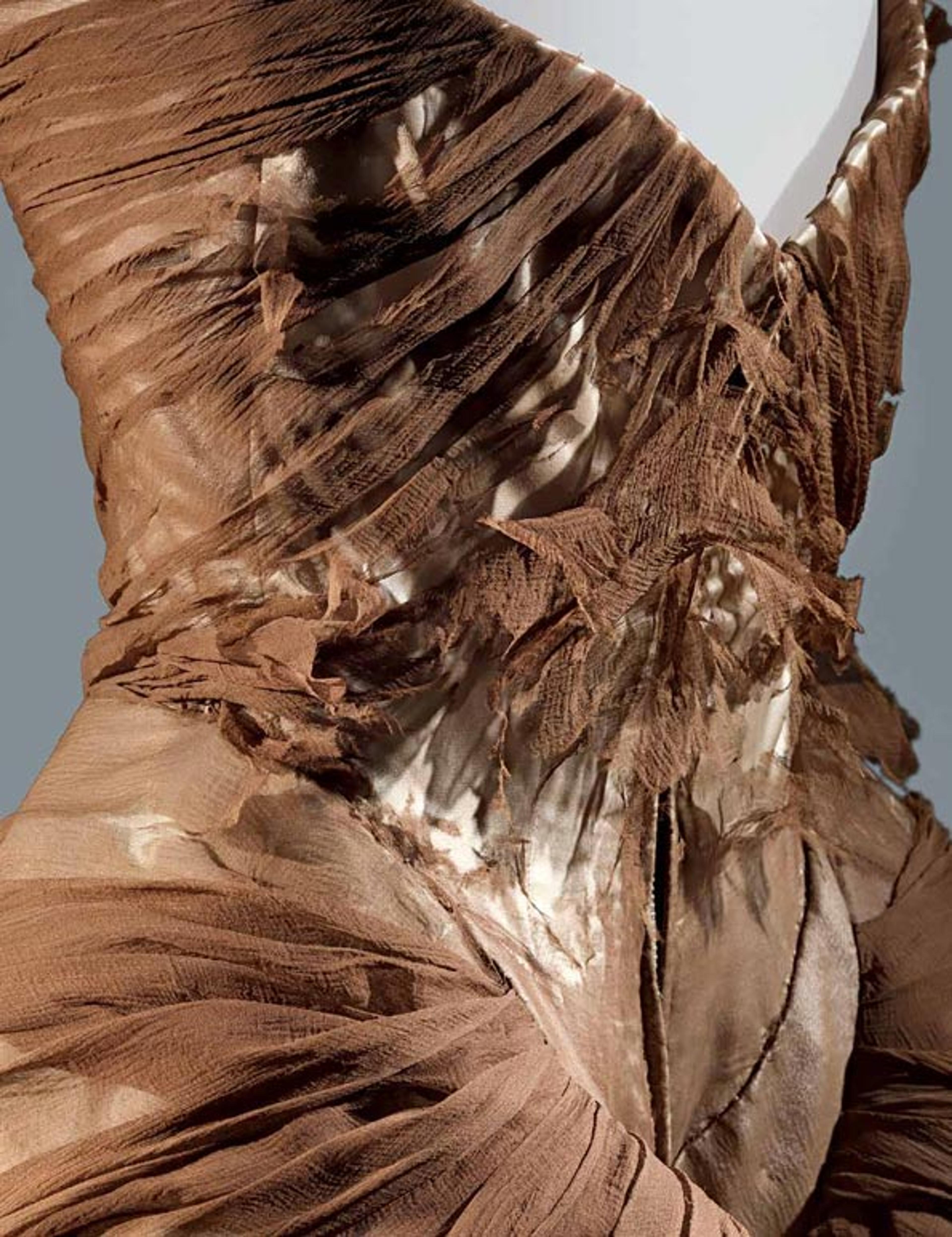
The back of this Charles James "Swan" gown, a victim of inherent vice, illustrates an extreme case of chiffon deterioration
Glenn Petersen: James liked a very structural shape in his garments, and there weren't any materials on the market at that time that produced the effect he wanted, so he had to innovate and use a combination of different materials.
Sarah Scaturro: Many of these different materials were new at the time and were unproven in terms of how they aged. In the catalogue we write about Pellon; what we are finding is that Pellon from that time period has yellowed and acidified, and is starting to lose its structural integrity. It also causes other materials close to it—silk in particular—to acidify quicker.
Rachel High: I spoke with Jan Reeder about James's work from a curatorial perspective. She mentioned that James was deeply interested in human anatomy and that his works reflected that. Could you speak about how this concept works from a conservation perspective? What challenges does it pose?
Glenn Petersen: James approached fashion design as a sculptor. He wasn't trained as a dressmaker and he didn't necessarily adhere to traditional dressmaking conventions. He composed his designs based on his conception of the body and how he wanted the object to look. For that reason, his garments have issues that are distinct from what would happen to a traditionally constructed garment. His methods weren't necessarily time-proven for constructing garments.
Sarah Scaturro: A common complaint you'll hear in the lab is that nothing's ever easy with James. If you want to just repair a sleeve or a waistband, there's always something unique that requires you to analyze it in depth. Glenn has worked very closely with the exhibition designers to create most of the analytical content that you see in the exhibition. Glenn and Jan Reeder understand James's garments better than anyone else.
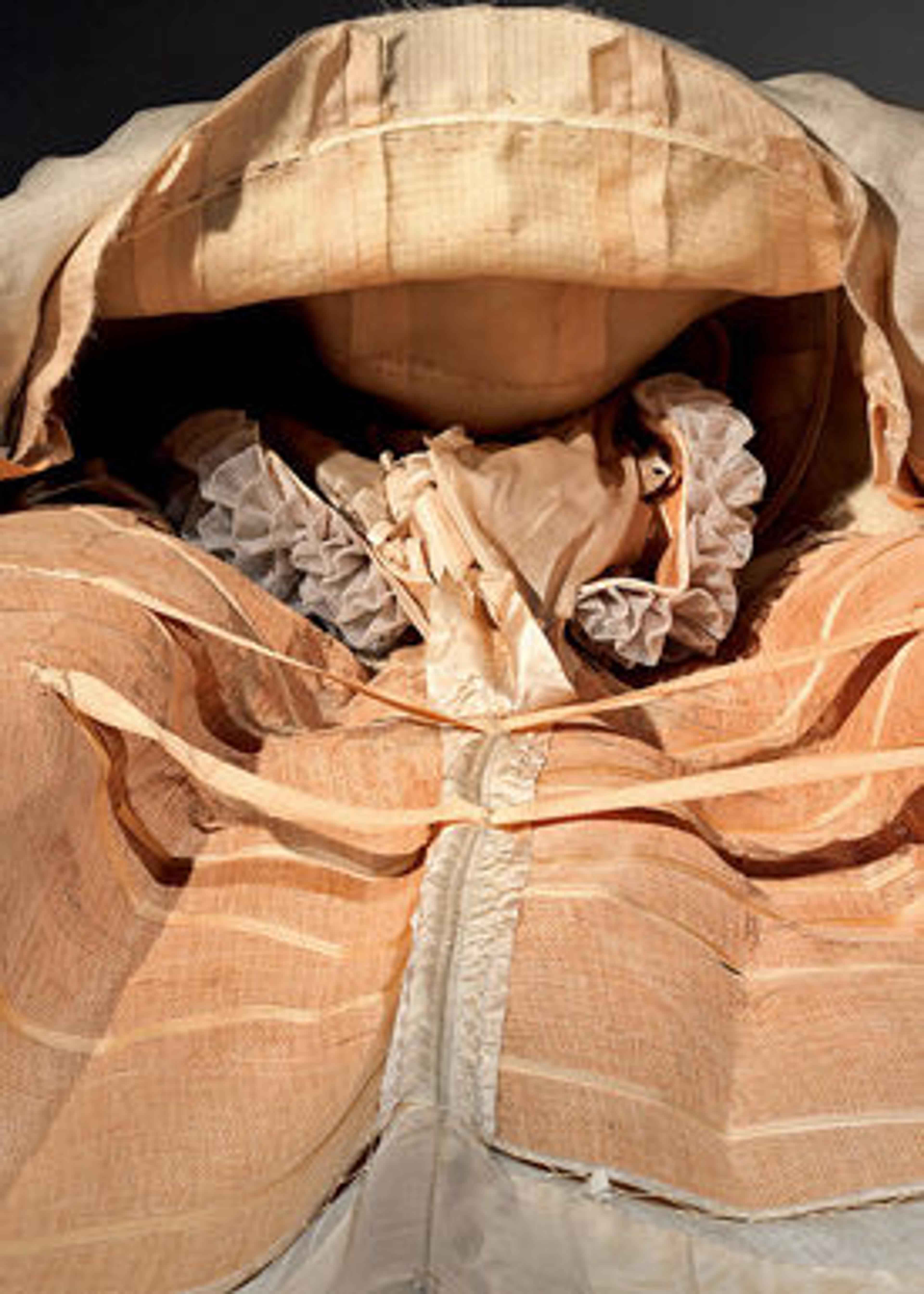
Rachel High: What was the most difficult piece you worked on for the Charles James Conservation Campaign, and why was it so challenging?
Sarah Scaturro: We chose to dry clean some of the garments to improve their health and appearance. The entire process was complex, challenging, and involved everyone in the conservation department. A highly specialized dry cleaner was brought in who works with historic clothing for consultations and to carry out the treatment. We whittled down a list of garments that would benefit and would not be harmed by dry cleaning—a process that was really time-consuming and involved a lot of planning and analysis. For example, we identified every fiber in the garments undergoing cleaning by polarized light microscopy.
We then hired a special art shipper, wrote pre- and post-treatment condition reports, and even went out to the dry-cleaning facility to inspect it and go through a test run using similar non-Museum objects. The day of the cleaning we couriered the pieces out to the location and were there during the entire process to closely monitor the treatment.
Above: Interior shot of James's "Swan" gown, which shows the complexity of the couturier's designs
Glenn Petersen: Probably the biggest project I worked on, and one of the garments that proved the most daunting, was one of James's "Swan" gowns displayed in the exhibition. We have a lot of people working on the project, and we worked together to figure out different approaches to conserving the gown. We have seven of the "Swan" gowns in the collection, but none of them are in excellent condition. The chief problem is that they have a layer of chiffon over the satin, which on almost all of them is tearing and disintegrating. Coming up with an approach to conserve the chiffon was challenging.
Fortunately, because we had several different gowns, we could pick and choose which one we would use. We picked one that had the most localized damage so we wouldn't have to treat it too much, and we came up with a treatment that enclosed the damaged material beneath a new surface we put over it. This served a two-fold purpose: it protected what was remaining of the original and also solved the problem of the chiffon, which is always extremely difficult to treat because it is very fragile and sheer. If you tried to patch it or do some other sort of layer, it would show. Using this technique gave us an aesthetically satisfactory view, and in a fashion exhibition, where the objects are supposed to look beautiful, that's very important.
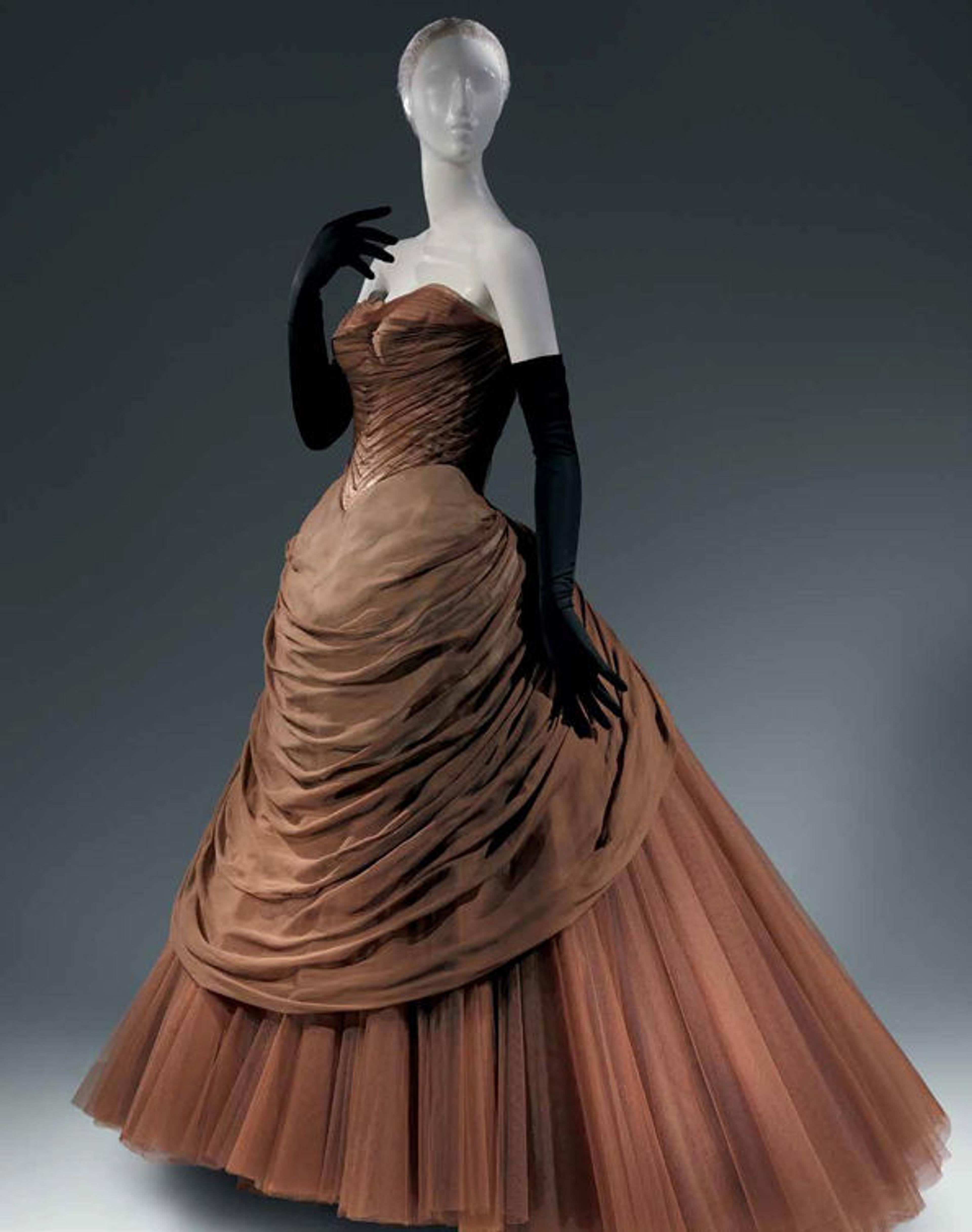
Charles James (American, born Great Britain, 1906–1978). "Swan" Gown, ca. 1954. Brown silk chiffon, cream silk satin, and yellow, purple, light brown, and brown nylon tulle. The Metropolitan Museum of Art, New York, Brooklyn Museum Costume Collection at The Metropolitan Museum of Art, Gift of the Brooklyn Museum 2009 (2009.300.8523)
Sarah Scaturro: Our main goal was to make sure that the garments were stable and safe enough to go on exhibition while also ensuring that they look beautiful. The appearance must emphasize that the garment is a piece of art.
Rachel High: What was the most surprising thing you learned about Charles James and/or his dresses while working on the conservation of his works?
Sarah Scaturro: I love his color choices, and obviously his construction and the way that he always did something slightly different. In particular, the colors of his linings are always very spectacular and not what you would think of as a typical color choice; his linings rarely match the exterior fabric. Because you can't always see the linings, we decided to match the fabric covering of the invisible dress forms to the color of the lining so that you get a sense of James's intended color palette.
Glenn Petersen: I was somewhat familiar with James's garments already. I had worked on the Brooklyn Museum Costume Project, so I saw all of their collection including a lot of his suits and daywear that you see less often. However, I think because I've been working so in-depth with the garments—by figuring out the patterns and how they were made as part of the research for the digital content of the exhibition—I've realized that James had a reason for doing things a certain way, which you don't notice as much when just casually looking at the clothes.
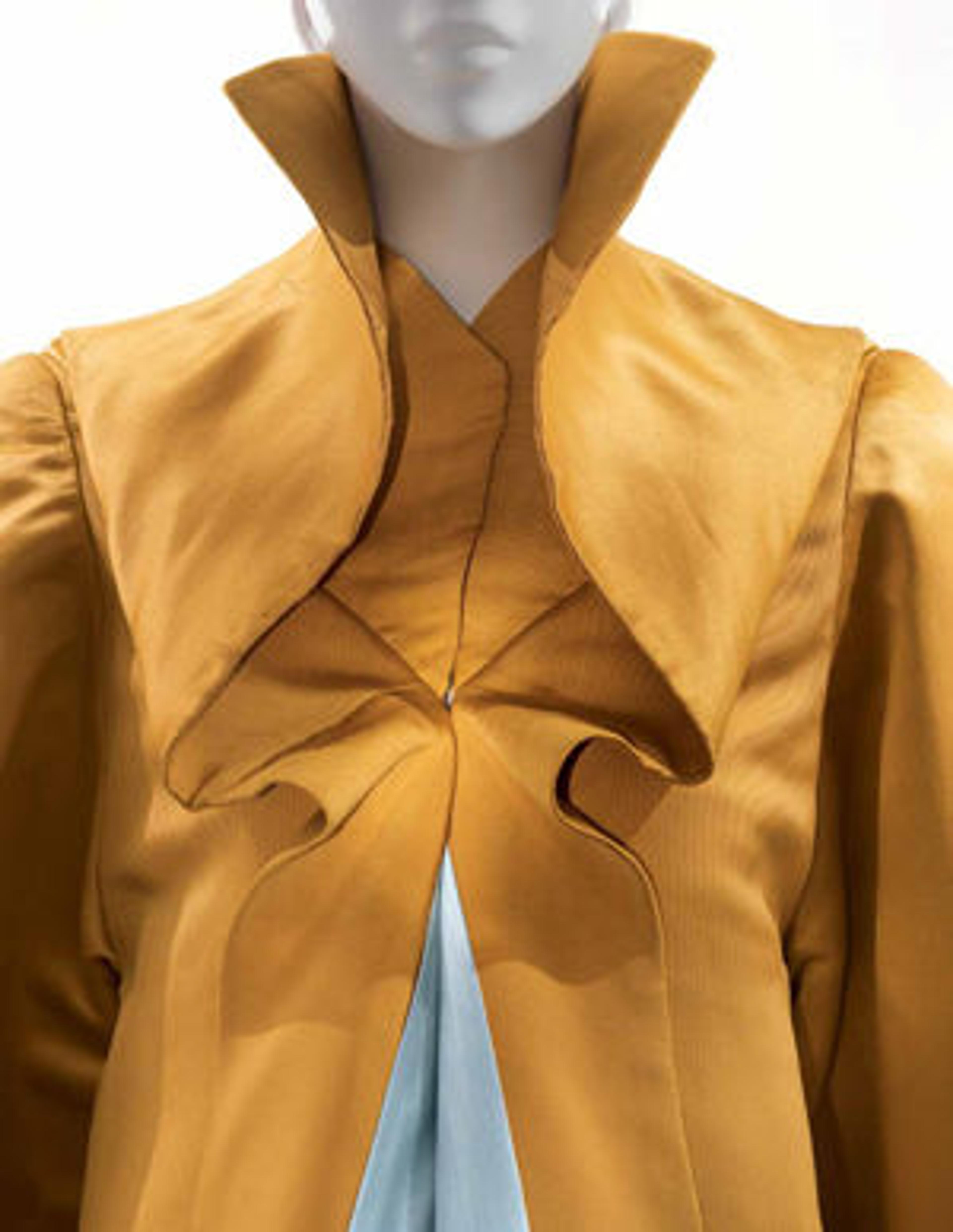
On the surface, you can see that the seams are placed in a very nice way, but when you really study them, you also notice how the different seams relate to each other. You can see why he put particular materials together and why he constructed things the way he did. I've heard people write him off, saying that he was basically a milliner and he made rigid forms and then threw cloth over the surface of them, but in reality there's a huge amount of thought that went into the designs.
Above: Charles James (American, born Great Britain, 1906–1978). Evening Coat, 1947. Yellow satin-back silk faille lined with pale blue silk duchesse satin. The Metropolitan Museum of Art, New York, Purchase, Costume Institute Benefit Fund, Friends of The Costume Institute Gifts, and Acquisitions Fund, 2013 (2013.383)
Sarah Scaturro: We are really excited to have such an incredible amount of analytical content being shown in the exhibition that incorporates the conservation perspective. We think that is a great, innovative component to both the book and the exhibition, and reflects the special type of knowledge and information that only conservators can reveal.
Related Links
The Met Store: Charles James: Beyond Fashion
Now at the Met: Interview with Charles James: Beyond Fashion Co-author Jan Glier Reeder
Now at the Met: Charles James: Beyond Fashion—Interview with Photographer Karin L. Willis